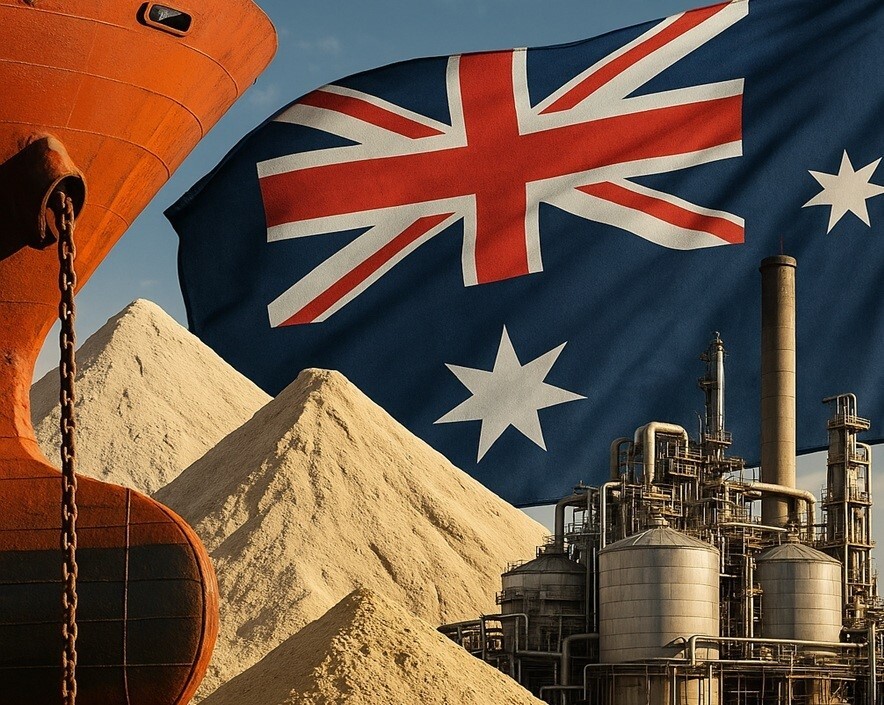

Indonesia’s decision to ban bauxite exports in 2023 has changed the map of alumina supply. Within a year, the country flipped from being a raw ore shipper to a net exporter of alumina in 2024, a shift that is now unsettling traditional producers in Australia and Brazil.

Analysts believe Indonesia could add double-digit million tonnes of capacity by 2027. If that happens, the alumina market could tip from tight supply into surplus within two years.
From ore to alumina
Until the ban, most of Indonesia’s bauxite was sent to China. Today, that ore is feeding a string of new refineries at home. The result: more cargoes of alumina leaving Indonesian ports and fewer raw bauxite shipments abroad.
The country’s location gives it another advantage. It sits close to China, the world’s biggest aluminium producer, reducing shipping costs and delivery times compared with supplies from Australia or the Atlantic Basin.
The government’s policy has also created a captive market: miners can no longer sell ores abroad and must supply local refiners instead. That integration shields projects from swings in global bauxite prices and helps them scale quickly.
Get more industry insights from - Global Aluminium Industry Outlook 2025
Is South32 in trouble?
Australia’s South32, the company which is run by the Worsley Alumina refinery in Western Australia, one of the largest outside China. In 2025 it posted a 75 per cent jump in full-year profit, partly on the back of strong alumina prices. But Indonesia’s rise could erode that strength.
South32 faces higher power costs at home, tighter environmental rules on waste and emissions, and ageing infrastructure that cannot match the efficiency of Indonesia’s new plants.
CEO Graham Kerr said Alumina is not nickel, earlier this year, noting that refining involves red mud waste and heavy infrastructure. He warned those challenges may slow Indonesia’s growth, but admitted the scale of new projects is a serious factor for the market.
If Indonesia keeps expanding, Australian producers may be forced to cut prices for Asian buyers or redirect cargoes to more distant markets. Either option would hit margins.
Prices and market balance
For now, alumina markets remain relatively tight, but analysts expect that to shift. With Indonesia’s refineries ramping up, global supply could outweigh demand by 2026–2027, sending prices lower.
Regional pricing gaps may also open up. Chinese smelters could source cheaper alumina from nearby Indonesia, while suppliers from Australia and Brazil are pushed into discounts to keep market share.
Some older refineries have already faced outages or closure in recent years. More could follow if Indonesian output grows as expected.
Even with rapid growth, Indonesia faces hurdles. Alumina refining is expensive and technically demanding. Each refinery costs billions and takes years to build. Unlike nickel smelting, the process creates massive amounts of red mud, a toxic by-product that requires careful handling. Reliable power, water, and logistics infrastructure are also essential — and harder to scale up quickly.
These factors mean growth may not mirror the nickel boom. Still, projects like SPIC’s planned 1.2-million-tonne refinery by 2027 suggest Indonesia is serious about long-term ambitions.
Outlook
Indonesia’s emergence has already forced a rethink across the aluminium industry. For South32 and other established producers, the challenge is clear: cut costs, boost efficiency, and secure customers before cheaper Indonesian supply floods the market.
Also Read: South32 to mothball Mozal Aluminium amid power deal deadlock
Responses








